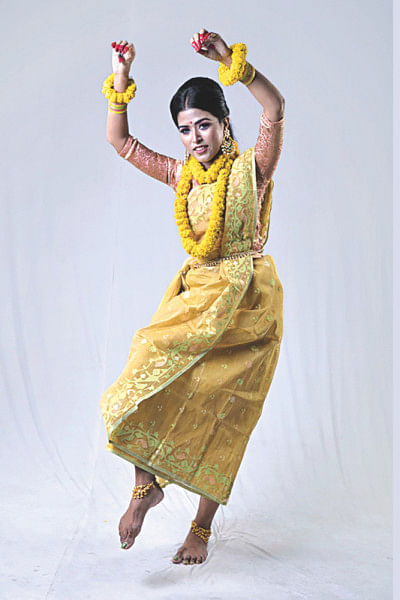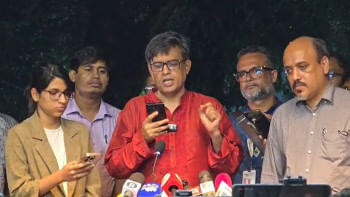Sylhet’s Dhamail: an ode to joy and community music

The singing troupes are, more often than not, amateurs. In wealthy households, professional musicians, or geedal as they are known, often took up the responsibility of performing the songs. But mostly, it was the average women that were, and still are, involved in this artistic venture. Their lessons in music handed only from one generation to the next.
The use of instruments was minimal, if not non-existent, with claps providing the only form of percussion. Especially in dhamail songs of Sylhet region, this unique feature is the hallmark of the songs. In Sylhet, the hand clapping is called thapri.
Dhamail is quite an ancient musical and dance form, although misconceptions attribute its origin to Radharaman Dutta. Musicologists and anthropologists maintain that the 14th century poet Chandi Das was inspired by dhamail songs, and his songs in the glorification of Krishna are a testament to that.
The breakdown of Dhamail is as follows: the songs usually start with one woman standing in the courtyard, clapping. She is the leader, singing the lines of a dhamail song — usually an ode to the divine affair between Radha and Krishna. As a few lines are sung, one or two women join her in the chorus, and the cheering continues with the hands. And as the song goes on, more women join in. As the clapping reaches a crescendo, so does the circular movement. The voices are raised, and the sound of the beat reaches a deafening peak. And then the beat regresses to normal. Most often, the dhamail ends on a highest note, where the singing and dancing reaches a peak.
All the womenfolk sing in unison. Some are incapable of holding their breath for a long time, and thus, it is important that all participants sing and maintain the beat. Dhamail songs do not roll from one note to another in a pleasant manner. It is the total performance; the dance and the song combined make it appealing. There is a speciality in the step and pace of the dance — women clap their hands successively by bending down and lifting their head to the front.
Footwork is equally important in dhamail dances. The toes of the back leg touch the ground and the heels remain high; thus, they have to alternate the right and left legs.
In terms of lyrics, the dhamail are primarily wedding songs where the protagonists are Radha and Krishna; it is believed that the inner significance of this dance form is that the newly-weds must immerse in a love like that of Radha-Krishna. What better way to remind of their eternal bond than music that transcends generations?
Photo: LS Archive/Sazzad Ibne Sayed

 For all latest news, follow The Daily Star's Google News channel.
For all latest news, follow The Daily Star's Google News channel. 



Comments